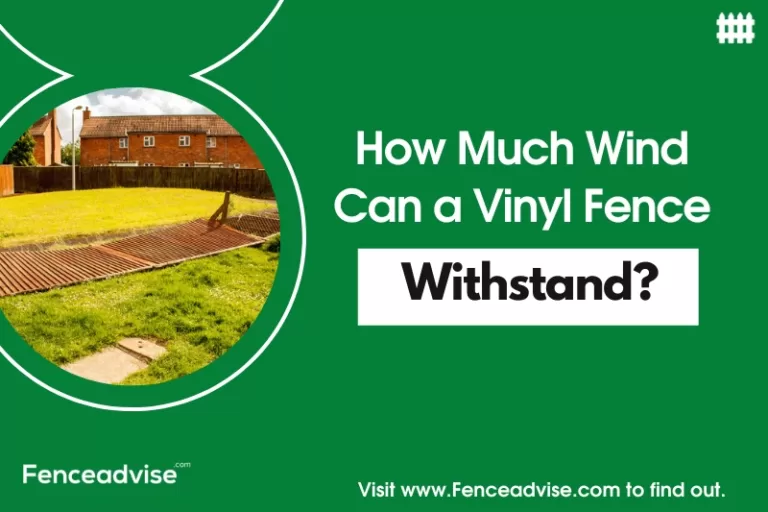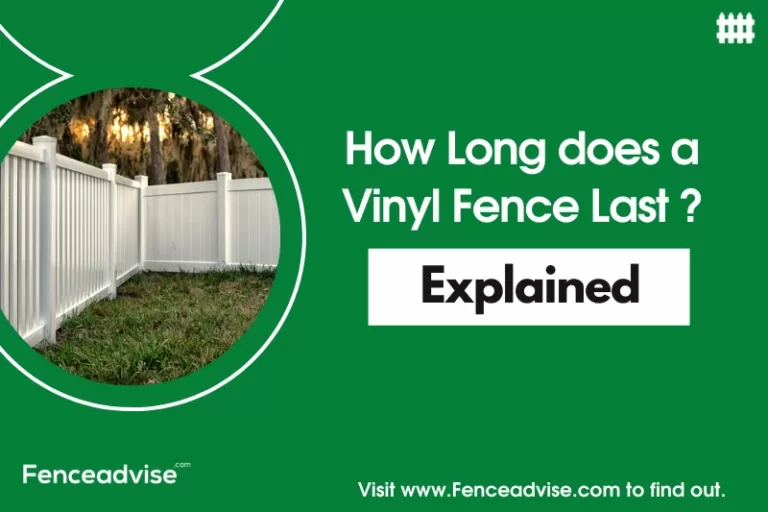We include products we think are useful for our readers. If you buy through links on this page, we may earn a small commission. Read our affiliate disclaimer here.
Growing vines on a vinyl fence is a great way to add some greenery to an otherwise boring yard or garden. A classic white picket fence can be transformed into a natural, attractive barrier by planting climbing vines on it, like ivy or jasmine.
Some homeowners are interested in having vines grow on the vinyl fencing. There are several ways to do this, including adding small tubs or other containers and planting the vines in them.
In this article, we’ve provided you with some simple guidelines that should help make growing vines on your fence easier.
fence advise editor’s choice
Artificial Faux Ivy Hedge Leaf and Vine Privacy Fence Wall Screen
Will Vines Grow on Vinyl Fence?
Vines will grow on a vinyl fence. However, the vinyl fence plays a role in the health of the vine. The fence acts as a support structure for the vine, so it is necessary to make sure that the vine has plenty of room to grow, and has something to hold on to.
First, you should make sure that you have a strong fence and posts. If not, you may find that the vine will grow in an odd shape, and not be able to hold on to anything.
Next, you must make sure that your fence is very clean. This keeps the vine from having to fight off any mold or mildew that may be on the fence. This will also help the vine to grow strong and healthy.
How Do You Attach a Vine to a Vinyl Fence?
Vines are a great addition to any garden. They grow quickly and add a bit of color to a yard. Vines can be attached to vinyl fences using metal poles or metal brackets. Metal poles are available at most home improvement stores and are the easiest way to attach vines to vinyl fences.
Steps to attach vine on vinyl fence
- Make sure you don’t plant the vine too close to the fence. Leave about 8 inches of space between the vine and the fence. If you plant it too close, the roots will grow into the fence, loosen and damage it.
- The vine needs to be trained on a fence. I use wooden stakes and tie the vine to them. You can also use wire, but you’ll need to bury it in the ground so that it doesn’t cut into the vine.
- Some vines will grow on their own without any help from you. The problem with this is that they may grow into the fence and damage it. If you have a choice, choose a vine that will grow on its own.
- You can also use a trellis to help train your vine to grow in the direction you want.
Get Free Quote
Quickly Find a Fence Installation, Repair Contractor Near you
Looking for a reliable fence installation or repair contractor in your area? Look no further! Fill out the form below to receive a free, no-obligation quote from one of our experienced professionals.
Our contractors are experienced and dedicated to providing the highest quality fence services. With a quick response time and competitive pricing, you can trust us to handle all of your fencing needs. Get started today and see the difference a high-quality fence can make for your property!
Read More
Fast-Growing Vines for Fence.
There are many different types of vines that grow quickly, and some are even hardy enough to grow in colder climates. Here are a few of our favorites:
Red Twining Hawthorn
There are many fast-growing vines for fences. One of the most striking is a beautiful Red Twining Hawthorn.
It spreads fast, creating a dense ground cover and an impenetrable barrier that can be used to deter intruders and protect vulnerable areas around homes. Because it grows so quickly, it is especially useful in areas where you want to create a natural boundary.
Bamboo
Bamboo is a fast-growing vine for fences that can be used to create a beautiful, elegant privacy screen. Bamboo is a sustainable resource that grows quickly and requires very little maintenance. It also adds beauty and elegance to your fence. Bamboo is very durable and can last for many years.
Climbing roses
Climbing roses are a great way to add color and beauty to your fence. They will also add privacy, but they need to be trimmed regularly. A climbing rose can be the focal point of your fence, or it can simply be a colorful addition to an existing fence.
There are other fast-growing vines that can be used to cover a fence. For example, vines like clematis, wisteria, and jasmine are good choices.
Find the right fence contractor for your project
Do Vines Destroy Fences?
Yes, they do. In fact, some fast-growing vines can be extremely destructive to fences, especially wooden fences. The best way to keep your fence from being destroyed by vines is to prevent them from growing on it in the first place.
If you have a fence that has already been infested with vines, you can cut them back to the ground and spray them with a non-selective herbicide. A vinyl fence does not usually suffer from the damage that wooden fences do.
Alternative Way to Use Vines on Fence
This alternative way to use artificial Vines on fences provides a realistic and low-maintenance option for those looking to add a touch of greenery to their yard.
Our Recommended Product
Our Pick
Best Choice Artificial Faux Ivy Hedge Leaf and Vine Privacy Fence Wall Screen
This lightweight and functional accent piece is designed to provide a realistic and natural look that adds an earthy feel to any indoor or outdoor space.With densely packed leaves, the artificial ivy fence provides a sense of privacy while also allowing airflow through its open net back. T
Here are some of the benefits of Artificial Vines:
- Realistic greenery: Artificial vines mimic the natural look of real vines, adding a touch of nature to your outdoor space.
- Low maintenance: Unlike real vines, artificial vines require no watering or sunlight, making them a low-maintenance option.
- Versatile: Artificial vines can be used on fences, walls, or any other outdoor surface you want to enhance with greenery.
- Durable: Made from synthetic materials, artificial vines are designed to withstand the elements, ensuring they maintain their fresh look for years to come.
Cons
- Some people may prefer the look of real vines
- Artificial vines may not provide the same environmental benefits as real vines, such as providing habitat for wildlife.
Conclusion
Growing vines on vinyl fences are a great way to add some color and privacy to an otherwise plain fence. Growing plants on the fence will make a huge difference in the appearance of your property and also provide some privacy from prying eyes. It can also be very cheap, depending on the type of vine you use.
At FenceAdvise, we pride ourselves on being the most reliable and trustworthy source of fencing information. Our articles are based on only the highest quality sources, including peer-reviewed studies, to ensure that our readers always have access to accurate information. Read more about our Editorial Guidelines, About Us.





